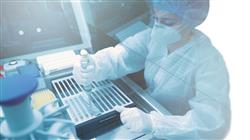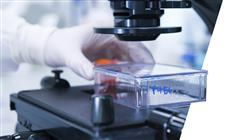University certificate
The world's largest faculty of nutrition”
Introduction to the Program
Get up to date on the most advanced statistics, delving into R, biostatistics and analytical methodology with which to take your medical nutritional research to a high level"

Research on nutritional issues is not trivial, especially in a society increasingly involved in diets of all kinds, with conditions caused by poor nutrition or an unusual interest in a more careful diet. Nutritionists have a favorable field of action not only to address all these issues in a practical way, but also to investigate them through research that follows the nutritional trends of both the present and the future.
This is where the ability of nutrition professionals come into play to undertake a research project, a complex issue that requires multiple skills and knowledge that, in addition, must be updated to the latest scientific and technological precepts. For this reason, TECH has created this Professional master’s degree in Medical Research, aimed at providing an overall but at the same time exhaustive view of all the steps to be followed when undertaking a project of this nature.
Therefore, nutritionists will learn different topics such as collaborative research, treatment of bibliographic and documentary sources or international funding calls, as well as the dissemination of results through reports, articles, conferences and even social networks. A whole appendix of contents that will give an improved, rigorous and current approach to the graduate's research projects.
In addition, the 100& online format of the program, without in-person classes or fixed schedules, allows total compatibility. It is the students who decide when, where and how to learn the entire teaching load, being able to distribute it at their own pace to adapt it to their work or personal responsibilities. Contents are available 24 hours a day from the virtual campus, accessible at any time from a computer, smartphone or device with Internet connection.
Invest in one of the research fields with the greatest current projection and obtain all the guarantees to undertake your own project in this Professional Master's Degree"
This Professional master’s degree in Medical Research contains the most complete and up-to-date scientific program on the market. Its most notable features are:
- Case studies presented by experts in Health Sciences Research
- The graphic, schematic, and practical contents with which they are created, provide scientific and practical information on the disciplines that are essential for professional practice
- Practical exercises where the self-assessment process can be carried out to improve learning
- Its special emphasis on innovative methodologies
- Theoretical lessons, questions to the expert, debate forums on controversial topics, and individual reflection assignments
- Content that is accessible from any fixed or portable device with an Internet connection
Learn how the R programming language can become an essential tool in your research, broadening your horizons in biostatistics, biomedical research and Data Mining"
The program’s teaching staff includes professionals from the sector who contribute their work experience to this educational program, as well as renowned specialists from leading societies and prestigious universities.
The multimedia content, developed with the latest educational technology, will provide the professional with situated and contextual learning, i.e., a simulated environment that will provide immersive education programmed to learn in real situations.
This program is designed around Problem-Based Learning, whereby the professional must try to solve the different professional practice situations that arise during the course. This will be done with the help of an innovative system of interactive videos made by renowned experts.
Acquire not only the best tools to collect and process data of all kinds, but also the knowledge to make high-level graphical representations"

All program contents can be downloaded directly to your computer or tablet of choice, providing you with a vital reference guide for your future nutritional research"
Why study at TECH?
TECH is the world’s largest online university. With an impressive catalog of more than 14,000 university programs available in 11 languages, it is positioned as a leader in employability, with a 99% job placement rate. In addition, it relies on an enormous faculty of more than 6,000 professors of the highest international renown.

Study at the world's largest online university and guarantee your professional success. The future starts at TECH”
The world’s best online university according to FORBES
The prestigious Forbes magazine, specialized in business and finance, has highlighted TECH as “the world's best online university” This is what they have recently stated in an article in their digital edition in which they echo the success story of this institution, “thanks to the academic offer it provides, the selection of its teaching staff, and an innovative learning method aimed at educating the professionals of the future”
A revolutionary study method, a cutting-edge faculty and a practical focus: the key to TECH's success.
The most complete study plans on the university scene
TECH offers the most complete study plans on the university scene, with syllabuses that cover fundamental concepts and, at the same time, the main scientific advances in their specific scientific areas. In addition, these programs are continuously being updated to guarantee students the academic vanguard and the most in-demand professional skills. In this way, the university's qualifications provide its graduates with a significant advantage to propel their careers to success.
TECH offers the most comprehensive and intensive study plans on the current university scene.
A world-class teaching staff
TECH's teaching staff is made up of more than 6,000 professors with the highest international recognition. Professors, researchers and top executives of multinational companies, including Isaiah Covington, performance coach of the Boston Celtics; Magda Romanska, principal investigator at Harvard MetaLAB; Ignacio Wistumba, chairman of the department of translational molecular pathology at MD Anderson Cancer Center; and D.W. Pine, creative director of TIME magazine, among others.
Internationally renowned experts, specialized in different branches of Health, Technology, Communication and Business, form part of the TECH faculty.
A unique learning method
TECH is the first university to use Relearning in all its programs. It is the best online learning methodology, accredited with international teaching quality certifications, provided by prestigious educational agencies. In addition, this disruptive educational model is complemented with the “Case Method”, thereby setting up a unique online teaching strategy. Innovative teaching resources are also implemented, including detailed videos, infographics and interactive summaries.
TECH combines Relearning and the Case Method in all its university programs to guarantee excellent theoretical and practical learning, studying whenever and wherever you want.
The world's largest online university
TECH is the world’s largest online university. We are the largest educational institution, with the best and widest online educational catalog, one hundred percent online and covering the vast majority of areas of knowledge. We offer a large selection of our own degrees and accredited online undergraduate and postgraduate degrees. In total, more than 14,000 university degrees, in eleven different languages, make us the largest educational largest in the world.
TECH has the world's most extensive catalog of academic and official programs, available in more than 11 languages.
Google Premier Partner
The American technology giant has awarded TECH the Google Google Premier Partner badge. This award, which is only available to 3% of the world's companies, highlights the efficient, flexible and tailored experience that this university provides to students. The recognition as a Google Premier Partner not only accredits the maximum rigor, performance and investment in TECH's digital infrastructures, but also places this university as one of the world's leading technology companies.
Google has positioned TECH in the top 3% of the world's most important technology companies by awarding it its Google Premier Partner badge.
The official online university of the NBA
TECH is the official online university of the NBA. Thanks to our agreement with the biggest league in basketball, we offer our students exclusive university programs, as well as a wide variety of educational resources focused on the business of the league and other areas of the sports industry. Each program is made up of a uniquely designed syllabus and features exceptional guest hosts: professionals with a distinguished sports background who will offer their expertise on the most relevant topics.
TECH has been selected by the NBA, the world's top basketball league, as its official online university.
The top-rated university by its students
Students have positioned TECH as the world's top-rated university on the main review websites, with a highest rating of 4.9 out of 5, obtained from more than 1,000 reviews. These results consolidate TECH as the benchmark university institution at an international level, reflecting the excellence and positive impact of its educational model.” reflecting the excellence and positive impact of its educational model.”
TECH is the world’s top-rated university by its students.
Leaders in employability
TECH has managed to become the leading university in employability. 99% of its students obtain jobs in the academic field they have studied, within one year of completing any of the university's programs. A similar number achieve immediate career enhancement. All this thanks to a study methodology that bases its effectiveness on the acquisition of practical skills, which are absolutely necessary for professional development.
99% of TECH graduates find a job within a year of completing their studies.
Professional Master's Degree in Medical Research
Medicine is facing a new paradigm in which global diseases are proliferating. To cope with this scenario, it is necessary for healthcare professionals to have a thorough knowledge of scientific research. In addition, the dissemination of findings and the comparison of studies are equally relevant. In fact, you will be able to delve into all these aspects with this Professional Master's Degree in Medical Research.
Take advantage of an opportunity to get up to date in the market
Through the Professional Master's Degree in Medical Research, you will delve into all phases of health research, from the creation of working groups to the dissemination of results. In addition, the program will include the use of Big Data, increasingly in demand in today's clinical market. This Master is 100% online and uses the Relearning methodology to make your educational cycle highly effective, being able to combine it seamlessly with your personal and professional activities.







